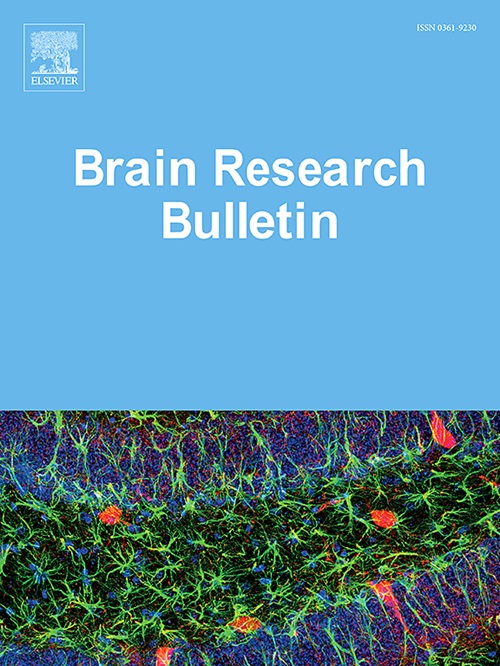基于多模态成像的三分支特征增强和融合网络对局灶性皮质发育不良病变的分割
IF 3.5
3区 医学
Q2 NEUROSCIENCES
引用次数: 0
摘要
目的常规的多模式成像,包括MRI和氟脱氧葡萄糖正电子发射断层扫描(FDG-PET),难以准确检测病灶性皮质发育不良(FCD)的细微或模糊病变。形态测量图通过突出异常区域来辅助定位,而小波滤波图像则强调纹理和边缘细节。因此,我们提出了一个三分支特征增强和融合网络(TBFEF-Net),该网络集成了传统的多模态成像、形态测量图和小波滤波图像,以提高FCD定位的准确性。方法提出的TBFEF-Net由语义分割主干、跨分支特征增强(CFE)模块和多特征融合(MFF)模块组成。在语义分割主干中,三个基于unet的分支分别从传统的多模态图像、形态测量图和小波滤波图像中提取语义特征。在编码阶段,CFE结合了基于残差的卷积块注意模块(CBAM)来聚合所有分支的特征,增强了FCD病变的特征表示。而在解码阶段,MFF将小波滤波成像分支的边缘细节特征集成到传统的多模态成像分支中,增强了捕获病变边缘的能力。因此,这种方法可以实现更精确的分割。结果实验结果表明,TBFEF-Net在FCD分割方面优于几种最先进的方法。在主要队列中,Dice和敏感性分别达到59.73 %和67.13 %,而在开放队列中,Dice和敏感性分别为54.67 %和54.81 %。意义首次将小波滤波图像引入到FCD分割中,为FCD病灶定位提供了一种新的方法和视角。本文章由计算机程序翻译,如有差异,请以英文原文为准。
Three-branch feature enhancement and fusion network for focal cortical dysplasia lesions segmentation using multimodal imaging
Objective
Conventional multimodal imaging, including MRI and fluorodeoxyglucose positron emission tomography (FDG-PET), has difficulty in accurately detecting subtle or blurred focal cortical dysplasia (FCD) lesions. Morphometric maps assist localization by highlighting abnormal regions, whereas wavelet-filtered images emphasize texture and edge details. Therefore, we propose a three-branch feature enhancement and fusion network (TBFEF-Net) that integrates conventional multimodal imaging, morphometric maps, and wavelet-filtered images to enhance the accuracy of FCD localization.
Methods
The proposed TBFEF-Net comprises a semantic segmentation backbone, a cross-branch feature enhancement (CFE) module, and a multi-feature fusion (MFF) module. In the semantic segmentation backbone, three UNet-based branches separately extract semantic features from conventional multimodal imaging, morphometric maps, and wavelet-filtered images. In the encoding stage, the CFE incorporates a residual-based convolutional block attention module (CBAM) to aggregate features from all branches, enhancing the feature representation of FCD lesions. While in the decoding stage, the MFF integrates edge detail features from the wavelet-filtered imaging branch into the conventional multimodal imaging branch, enhancing the ability to capture lesion edges. As a result, this approach enables more precise segmentation.
Results
Experimental results show that TBFEF-Net surpasses several state-of-the-art methods in FCD segmentation. In the primary cohort, the Dice and sensitivity reached 59.73 % and 67.13 %, respectively, while in the open cohort, the Dice and sensitivity were 54.67 % and 54.81 %, respectively.
Significance
We introduced wavelet-filtered images for the first time in FCD segmentation, offering a novel approach and perspective for FCD lesions localization.
求助全文
通过发布文献求助,成功后即可免费获取论文全文。
去求助
来源期刊

Brain Research Bulletin
医学-神经科学
CiteScore
6.90
自引率
2.60%
发文量
253
审稿时长
67 days
期刊介绍:
The Brain Research Bulletin (BRB) aims to publish novel work that advances our knowledge of molecular and cellular mechanisms that underlie neural network properties associated with behavior, cognition and other brain functions during neurodevelopment and in the adult. Although clinical research is out of the Journal''s scope, the BRB also aims to publish translation research that provides insight into biological mechanisms and processes associated with neurodegeneration mechanisms, neurological diseases and neuropsychiatric disorders. The Journal is especially interested in research using novel methodologies, such as optogenetics, multielectrode array recordings and life imaging in wild-type and genetically-modified animal models, with the goal to advance our understanding of how neurons, glia and networks function in vivo.
 求助内容:
求助内容: 应助结果提醒方式:
应助结果提醒方式:


